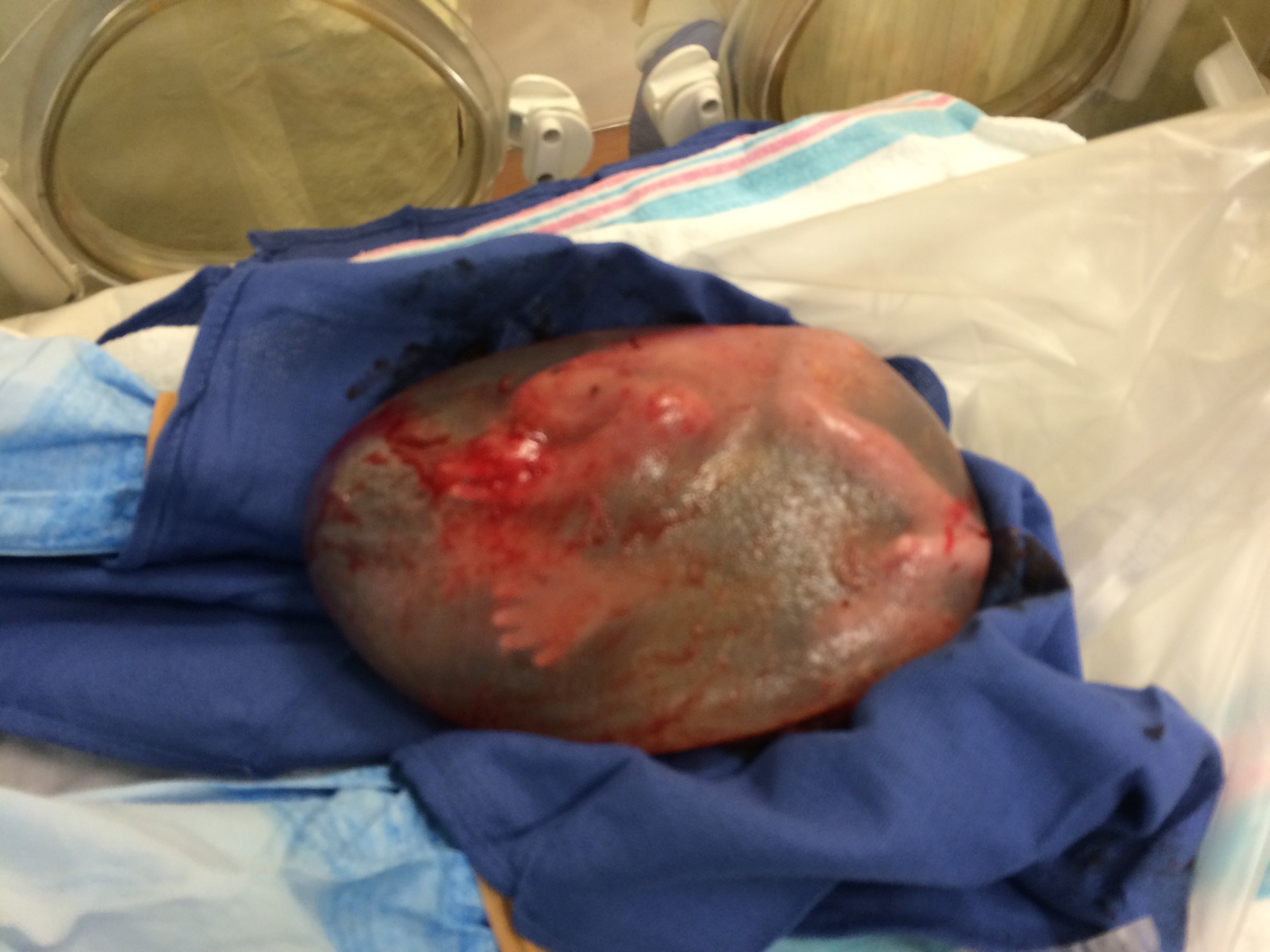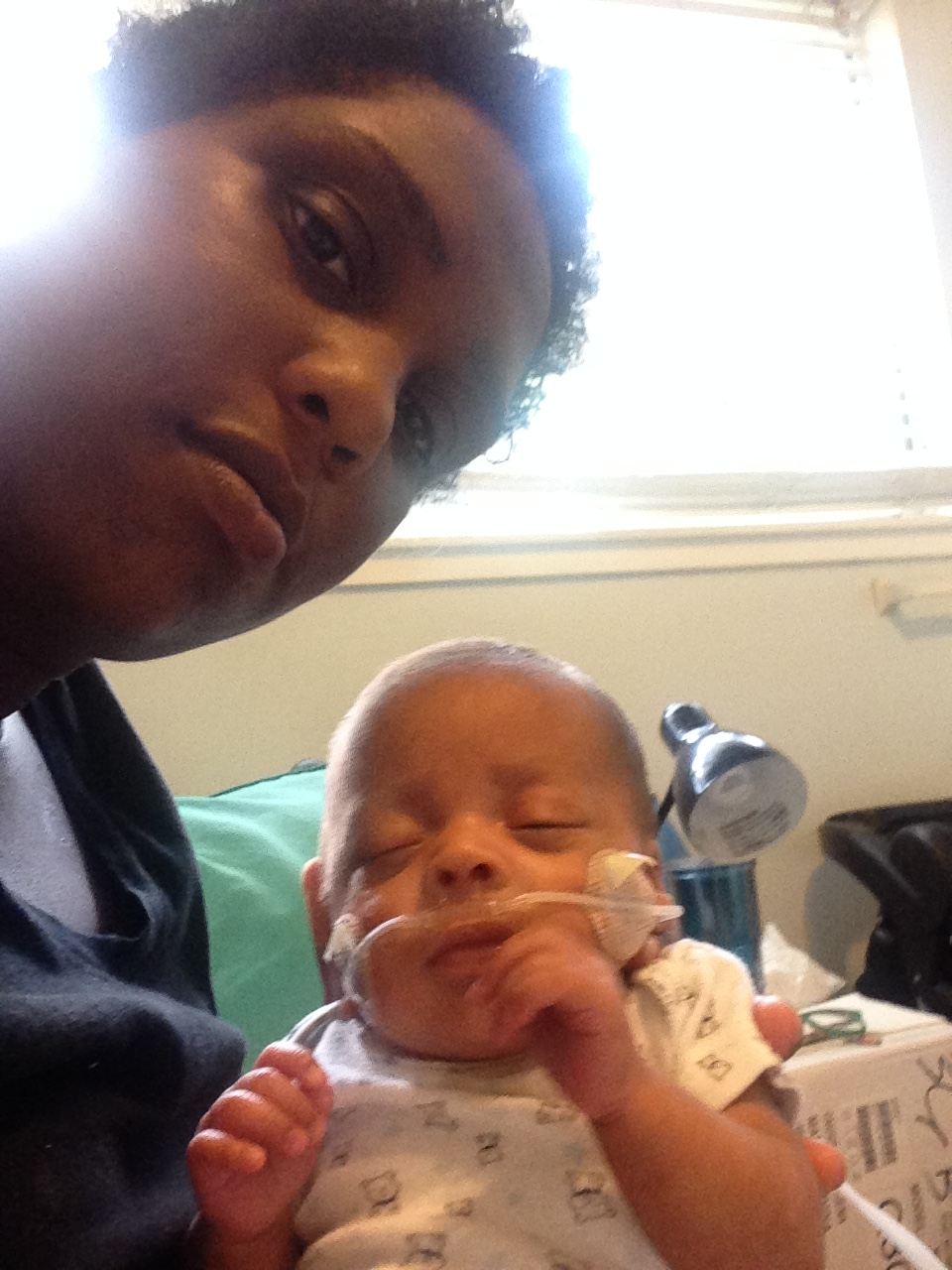
Correction appended
Silas Johnson is barely a day old and is already an internet sensation. The Los Angeles infant was born three months early, and was remarkably still completely encased in his amniotic sac, making it appear as if doctors delivered a large bubble with a tiny baby inside.
Johnson was born at Cedars-Sinai Medical Center via C-section, curled in the hallmark fetal position within, and his hands were visible pressing against the clear membrane of the sac. His physician was so surprised by the rare birth that he snapped a photo on his cell phone while his team rushed to ensure that the baby’s breathing and heart rate were normal.
The sac is the baby’s home during gestation, filling with fluid to cushion him during pregnancy. Just before birth, it normally ruptures — the so-called ‘water breaking’ that signals an expectant mom that labor is underway. (In cases where the water doesn’t break, doctors can puncture the sac to release the fluid.) In Cesarean sections like this one, doctors frequently pierce through the sac as they make their incision to remove the baby.

In vaginal births, the sac remains in the mother as part of the placenta, and isn’t released until the placenta is removed in the afterbirth. But in some births, parts of the sac follow the baby through the birth canal.
While seemingly unusual, births ‘en caul,’ in which the infant remains entirely inside the sac during the journey through the birth canal, can be intentional, particularly when the baby is premature. Dr. Amos Grunebaum, director of obstetrics at NewYork-Presbyterian Weill Cornell Medical Center, purposefully delivers some of his babies in the sac, as a way to protect them during the delivery process. “It protects the baby from being injured; it serves as a cushion around the baby.”
Amniotic sacs and its fluid are connected to the placenta, which provides oxygen to the baby. So as soon as the baby is born, the sac must be ruptured to help the baby breathe.
“There are a lot of myths surrounding en caul births,” says Grunebaum. “There are many, many difference sources in the literature where people think the person delivered that way has certain powers.”Johnson’s mother Chelsea isn’t worried about that, but told CNN after seeing her doctor’s picture that “Silas, you’re a little special baby.”
Correction: This article originally misstated the baby’s last name. It is Johnson.
Read next: How to Parent Like a German
More Must-Reads from TIME
- Cybersecurity Experts Are Sounding the Alarm on DOGE
- Meet the 2025 Women of the Year
- The Harsh Truth About Disability Inclusion
- Why Do More Young Adults Have Cancer?
- Colman Domingo Leads With Radical Love
- How to Get Better at Doing Things Alone
- Michelle Zauner Stares Down the Darkness
Contact us at letters@time.com